
by John | Jun 25, 2021 | Interviews, Sci-Fi and Fantasy Award, WriteMovies Academy
Hot on the heels of winning our last Grand Prize Contest, Vanisha Renée Pierce has won our Sci-Fi and Fantasy Award with her script EZEKIEL – and to celebrate and give you insights into winning our contests, WriteMovies is doing an exclusive interview with her which you can watch for FREE!
(more…)
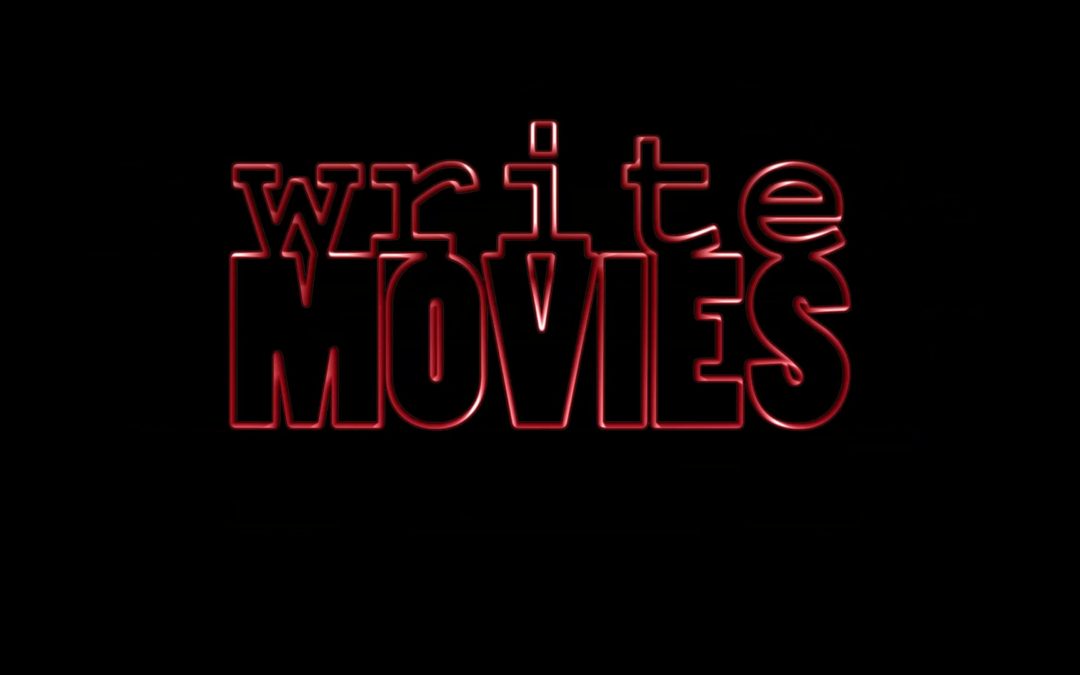
by John | Oct 19, 2018 | Highlights, Interviews, Updates
In Part One of our exclusive article in conversation with Steven Knight, the writer-director spoke about how he began his career and about the rise of TV drama. Now, in Part Two, we find out about some of his influences and future plans…
Steven explained that PEAKY BLINDERS is based on stories of his parents and uncles, many of which he heard while around his blacksmith father while he was young. Once the BBC took an interest, things moved quickly. With series 1 complete, Steven was looking at potentially making 4 or 5 series of PEAKY BLINDERS.
PEAKY BLINDERS uses some CGI, but mostly uses derelict locations that aren’t about to be knocked down (one key location is the street where Ringo Starr was born!). There was resistance to setting PEAKY BLINDERS in Birmingham (UK) because of the unglamorous accent, but Knight insisted on retaining that authenticity – he believed that we should be telling our own stories of places like Birmingham.
The basic premise of LOCKE (starring Tom Hardy) was a journey from Birmingham to London, where someone starts out with everything and ends up with nothing – exploring how that could happen. If the cost is low enough, you can get creative freedom to run a project your way. LOCKE knocked CAPTAIN AMERICA off number 1 in terms of revenue per screen! It was on vastly less screens of course, but that was still very promising. Knight was determined that the character in that film should be the most ordinary person possible.
He explained that you have to write a three page outline for studios, however unlikely the script was to end up that way. Knight prefers not knowing where a story is gonna go. He writes, then goes back to the start every day and works through from there.
Knight has accidentally become the poster-boy for Birmingham’s drives to move to the next level in its drive to become a major player in global culture. He intends to build a major sound stage in Birmingham as London’s major studios are fully booked, with a ‘halo effect’ of businesses based around it, and from this to also create a scene where live theatre can lead to movies being made.
Ian Kennedy’s conversation with Steven Knight turned out lots of interesting information about the inner working of the industry. If you haven’t read it yet, why not take a look at Part One by clicking here?
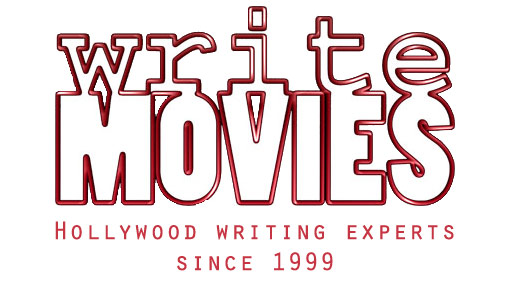
by John | Oct 12, 2018 | Highlights, Interviews, Updates
Our Ian Kennedy was lucky enough to share a table for an evening with Steven Knight, the writer of SERENITY, PEAKY BLINDERS, TABOO, DIRTY PRETTY THINGS, LOCKE, and much more…
Steven Knight says that we’re entering a golden age of TV and film. He explained that the US system is great for writers – it’s unionized and you can make a proper living just from writing. He actually felt that there seems to be a good mystery to you if you DON’T live in LA, as long as you’re prepared to fly out every 6 weeks and do late-night conference calls.
But he explained that the Hollywood system is slow! It takes many years of gestation most of the time. If you persuade a star to be in your project, the studios know they’ll make back a certain many million dollars from it – his film HUMMINGBIRD (with Jason Statham) was in profit before it even got to the cinema. He felt that distributors often underestimate their audience and focus on young males.
Screens are better nowadays so TV drama has risen a lot. Actors like TV and it’s a writer’s medium – writers have control there, unlike other formats. Too many people are involved in making films, telling you something’s not good enough in order to justify their presence and pay. But getting actors to commit beyond series 1 of your TV series is hard because they may get film offers.
Show runners write episode 1 in the US and their team of writers – who’ve developed it with them – do other episodes. Writers rise up through the ranks in the US. British TV writing is more eccentric and individualistic – the US system is more corporate. Theatre writers are good for TV due to their ability with dialogue and are often overlooked.
Steven Knight explained that he had begun his career in the UK by writing plenty for radio, and for comedians including particularly Jasper Carrott, and writing 31 episodes of Carrott’s sitcom with Robert Powell, THE DETECTIVES. Steven was one of the 3 founders of WHO WANTS TO BE A MILLIONAIRE. He also wrote novels for Penguin, and presented DIRTY PRETTY THINGS to the BBC which led to that commission.
Then came AMAZING GRACE, for the 200th anniversary of the end of the slave trade, and EASTERN PROMISES which led from DIRTY PRETTY THINGS. The award nominations that came as a result of these put him into the US system, which he found to be great for writers. He got to direct HUMMINGBIRD which he had also written, and after that wanted to get total control of a project – and he feels that LOCKE vindicated him becoming a director.
Click HERE to check out Part 2 of our conversation with Steven Knight, in which he discusses the influences behind PEAKY BLINDERS, his writing process, and his plans for the future…
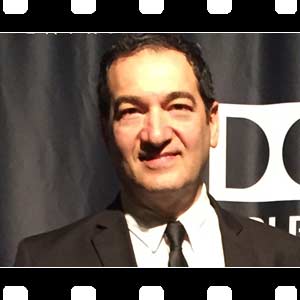
by John | Nov 19, 2017 | Highlights, Interviews, Updates, WriteMovies News
Taking Flight in THE SQUADRON: VFX expert Habib Zargarpour on becoming a writer-director and the getting the balance right with real VFX.

In the third of our series of interviews, our Ian Kennedy asks Habib about his transition to writing and directing, the unique eye his new film will give to WW2’s aerial warfare, and why VFX pros have to keep it real too.
 IAN: So next for you is THE SQUADRON which you’ve written and are directing!
IAN: So next for you is THE SQUADRON which you’ve written and are directing!
HABIB: Yes, we’re doing a lot of visual effects shots for this shoot, we’ve got a lot of actors in cockpits, we’ll have to replace the background with what’s going on in the skies. It’s very tricky to light and to put greenscreen around real authentic planes, because the light has to move to show that the plane is moving, but you don’t want something [a heavy light] that could fall and wreck the [actual] plane, so we have to be super-careful with that, there’s a lot of technical challenges to it.
IAN: I was lucky enough to be consulted by Alex Ross (THE SQUADRON producer and WriteMovies founder) about one of your very early drafts of this one, it was fascinating to see how visual your ideas were – too many writers come from the opposite direction, getting heavy with dialogue and exposition, and you’re coming from the other way round with that.
HABIB: This is interesting to hear, because I don’t know any different, from you guys’ point of view! I do know I’m getting better at it for sure, it really helps to see how things evolve once you start shooting, we also got great synergy between the actors when we shot in a warehouse in Vancouver, them playing off each other. When I wrote I had the cast in mind, and things have worked out even better than I thought – they enhance it, they also bring stuff to the table by saying things like “I think my character would be more “…” in this situation, he’d say this other thing…” – so that’s woven into it. This next shoot should come together really well because all of these elements will come together, and hopefully the continued dialogue will keep getting even better at the same time. I’m looking forward to sending you a rough cut of the trailer, see what you think!
IAN: That’ll be amazing yeah! The pictures I have in my mind from what I’ve seen in the script are a really distinctive use of that whole World War 2 setting. Sometimes we feel like we’ve seen all there is to see of that conflict, but there’s always more to explore and it felt like you’ve put a good new edge into that.
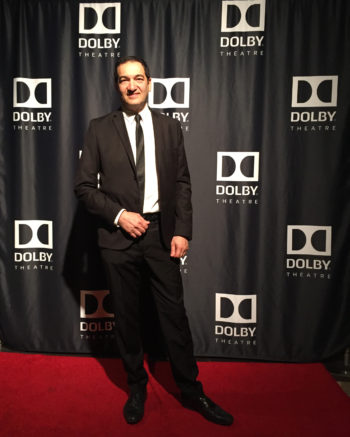 HABIB: I had a lot of fun preparing for it, even though the timeframe was very tight, I only had 4 weeks to get all that in mind, finishing the script, getting the props, getting wardrobe, all the logistics for the travel and permits and things like that. One of the more fun things was to design and 3D print and build the props that I couldn’t find, and others that I wanted to custom design, taking advantage of my ArtCenter experience, building models of products that look authentic. I was able to apply those and use the latest technology – I have a 3D printer that I use, that gets the models and then we do the finishing and polish on them. The other things are all authentic that I was able to gather over a long time, by going to air races and going online on eBay, there were these authentic goggles and flight caps. A lot of things needed adjusting for size because people were smaller then, which was interesting!
HABIB: I had a lot of fun preparing for it, even though the timeframe was very tight, I only had 4 weeks to get all that in mind, finishing the script, getting the props, getting wardrobe, all the logistics for the travel and permits and things like that. One of the more fun things was to design and 3D print and build the props that I couldn’t find, and others that I wanted to custom design, taking advantage of my ArtCenter experience, building models of products that look authentic. I was able to apply those and use the latest technology – I have a 3D printer that I use, that gets the models and then we do the finishing and polish on them. The other things are all authentic that I was able to gather over a long time, by going to air races and going online on eBay, there were these authentic goggles and flight caps. A lot of things needed adjusting for size because people were smaller then, which was interesting!
IAN: CGI has really taken over so much of VFX in recent decades. Have you missed working with physical materials and objects, like the models you’ve brought back into THE SQUADRON?
HABIB: [You should use] whatever can be done the most easily that makes the most sense and most helps the actors – you’d want to do something practical, if it’s something they’re wearing or touching. I myself had to do a lot of CGI for some of the very complex aerial combat scenes. That’s always a question of how much of the real you can bring in. Theoretically you could shoot someone against a greenscreen and put the whole airplane around them, as opposed to filming them in a real cockpit around them, each of those brings different challenges and pros and cons to it. Usually, the more you can get the real stuff in it, the easier it’s gonna be to get the right look.
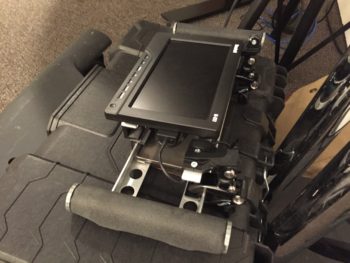 IAN: And there’s been an audience backlash against overdone excessive CGI and unreal characters, so it’s important to keep that balance.
IAN: And there’s been an audience backlash against overdone excessive CGI and unreal characters, so it’s important to keep that balance.
HABIB: Yes, and I recently saw Dunkirk, and I know Christopher Nolan’s a massive fan of ‘as much practical as possible’. I’ll send you my trailer rough cut soon too…
IAN: Definitely. And we’d love to talk about your work as a lead designer in famous computer games too!
© WriteMovies 2017. Exclusive to WriteMovies – To syndicate this content for your own publication, contact ian (at) writemovies dot-com.

by John | Nov 12, 2017 | Interviews, Updates, WriteMovies News
The eye of the storm: in the second of our series of VFX interviews, VFX expert Habib Zargarpour reveals how his teams achieved such awesome effects in A PERFECT STORM, TWISTER, STAR TREK: GENERATIONS, STAR WARS EPISODE I (THE PHANTOM MENACE) and many other films.

In the second of our series of VFX interviews, Habib tells our Ian Kennedy how to achieve natural disasters and why yogurt holds the key to VFX. His credits include two STAR TREK movies, STAR WARS EPISODE 1 (THE PHANTOM MENACE), THE BOURNE IDENTITY, JUMANJI, THE MASK, SPAWN and lots more so he must be onto something!
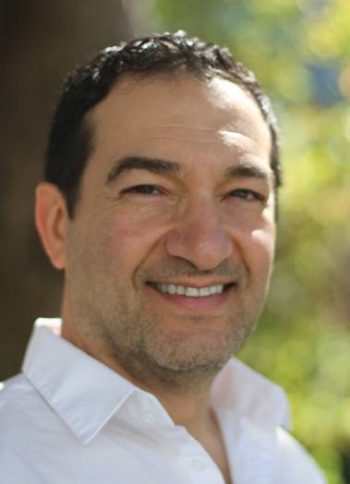 HABIB: I’ve had the chance to work on a lot of disaster films, especially natural disasters. For those we would work with storyboards but also with tons of real-world reference, which was difficult. People have seen on TV what tornados look like, stormy seas look like, how water looks, what fire looks like, things that we had very difficult but precise things to match to. There were other projects where we had much more creative freedom in the effect, for example on Star Trek, there would be maybe one concept art of the energy ribbon nexus effect in STAR TREK: GENERATIONS, then we would come up with what that would look like in 3 dimensions, how that would move, and what the colours would be, so that there’s a nice range there. Other times we would take, let’s say the tornado effect in Twister, turn it upside down, turn it around and that would be the rocket flow, you know? I equate it to making yogurt – you always need a little bit of [older] yogurt that helps to get the new one going, it saves you a bit of time, you know? And so for example, for A PERFECT STORM we had to do sprays and splashes of water, but we already had a particle system from TWISTER and we were able to do different things with it. How to we take things that are meant to simulate a dust storm and something that looks dusty and thick, and make it look like water vapor, make it look like a splash. There’s the physics of how all that moves, but when it comes to the look of it, there’s actually a lot of similarities between dust in the air and spray and water mist in the air, you study the difference. We added in light penetrating deeper which was able to scatter more, and that gives you the water splash. We had real water splashes to match to on set, and references of stormy seas – that kind of stuff’s really tough.
HABIB: I’ve had the chance to work on a lot of disaster films, especially natural disasters. For those we would work with storyboards but also with tons of real-world reference, which was difficult. People have seen on TV what tornados look like, stormy seas look like, how water looks, what fire looks like, things that we had very difficult but precise things to match to. There were other projects where we had much more creative freedom in the effect, for example on Star Trek, there would be maybe one concept art of the energy ribbon nexus effect in STAR TREK: GENERATIONS, then we would come up with what that would look like in 3 dimensions, how that would move, and what the colours would be, so that there’s a nice range there. Other times we would take, let’s say the tornado effect in Twister, turn it upside down, turn it around and that would be the rocket flow, you know? I equate it to making yogurt – you always need a little bit of [older] yogurt that helps to get the new one going, it saves you a bit of time, you know? And so for example, for A PERFECT STORM we had to do sprays and splashes of water, but we already had a particle system from TWISTER and we were able to do different things with it. How to we take things that are meant to simulate a dust storm and something that looks dusty and thick, and make it look like water vapor, make it look like a splash. There’s the physics of how all that moves, but when it comes to the look of it, there’s actually a lot of similarities between dust in the air and spray and water mist in the air, you study the difference. We added in light penetrating deeper which was able to scatter more, and that gives you the water splash. We had real water splashes to match to on set, and references of stormy seas – that kind of stuff’s really tough.

A still from one of Habib’s films, A PERFECT STORM.
Things have come a long way in 17 years since A PERFECT STORM. Software is able to simulate all the different components of water, it still takes a huge amount of time to run those things, but at least some of it’s more achievable all in one place, whereas back then we had to divide things up into elements separately so the machines could deal with it, and the artists, actually. We learned a lot from meteorologists and people who study oceans and storms, I don’t know whether they gained anything from us other than enjoying it visually. It’s amazing watching on TV these days, it’s a strange combination of things going on at the same time, like earthquakes and watching these hurricanes going on through all the time. At the time I was working on TWISTER I had trouble driving, because I would get distracted by cloud formations in the skies, sometimes I’d have to pull over and take pictures of it. That could be dangerous!
IAN: I bet! So – if all the directors and DPs and VFX people you’d worked with all separately asked you to work on their different projects at exactly the same time, who would you choose?
HABIB: Oh God! (laughs) That’s a really tough question. I think it’d be a tie between Denis [Villeneuve] and John Nelson. Denis is a really great visionary director, and I know whatever John Nelson does next is gonna be maybe perfect!
© WriteMovies 2017. Exclusive to WriteMovies – To syndicate this content for your own publication, contact ian (at) writemovies dot-com.








